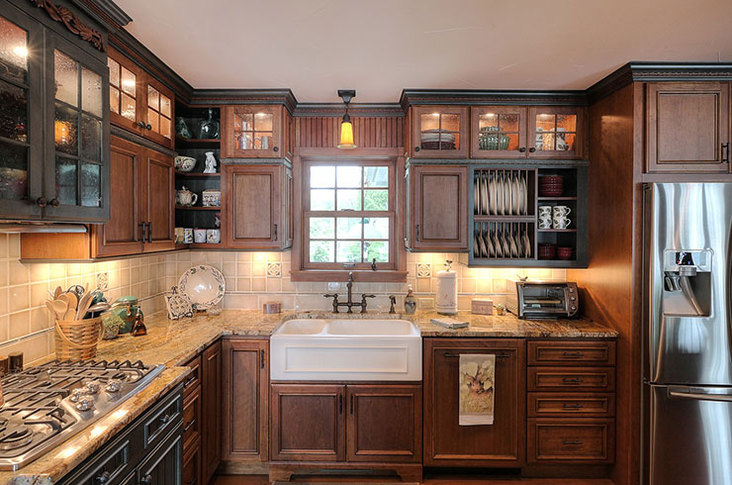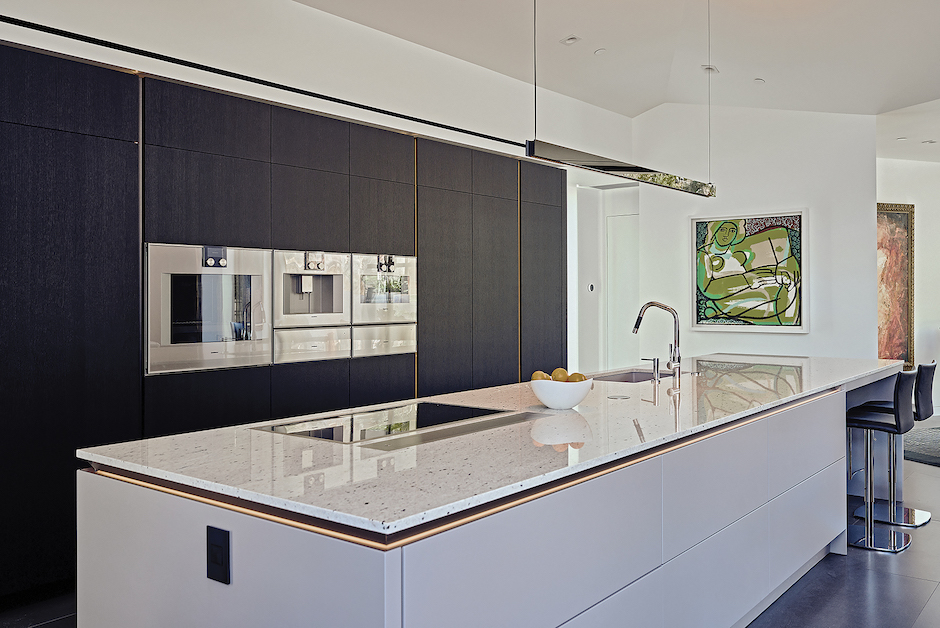February 17, 2014
In a Michigan lake house, a kitchen redesign presented a colorful challenge to designer Angela Goodall, owner of locally-based Kitchen Choreography. “This was a fun one,” she said, before she explained each hurtle. “We spent a lot of time creating a lot of different elements that blended together really well, and when you start to really analyze the design you see all of the different pieces that went into it.”
View this kitchen gallery here.
Having undergone recent renovations, the home now had a continuous arts-and-crafts style to it. Six-ft.-high wainscoting, beadboard, wood elements, cherry trim and green-painted cabinetry in the nearby laundry room gave Goodall a starting point for the kitchen.
“The owner just loved the green-painted cabinetry but knew she didn’t want an entire kitchen of green cabinets,” she explained. “That’s where the wood two-toning came into play.”
With a cautious homeowner on hand, Goodall worked to make sure her client understood each individual piece and “where the transitions of color might happen, which was challenging,” she said. “We took the time we needed and the result, of course, speaks for itself.”
Using a color-based stain, Goodall tinted sections of the cherry cabinetry the same shade of green as the cabinetry in the laundry room. The solid stain still shows the wood grain through the color. “To me that’s one of the things that makes it more interesting,” she commented. “It’s probably something we use more in the North, because it has an earthy, wood-like feeling to it.” The taupe color breaks up the wood, giving it more interest and style.
A granite countertop streaked with shades of gold, gray and taupe ties in the color palette. “We went more with the colors that we were going to meld together, versus something that had a lot of pattern to it,” said Goodall. “It has a nice flow, but the overall focus of the granite was to get the colors that we were looking at.”
One of these colors is in the backsplash, which is made of hand-glazed, taupe porcelain tile. As it was hand-fired per order, the color variation of the taupe tile was not certain until the order came in. “It’s actually two different colored tiles, technically,” added Goodall. The design team went through the tiles and selected them based on tonality.
The island in particular showcases the most detail in coloring and texture. “It’s a smaller piece than the rest of the kitchen, so the owner did allow me to take some liberties,” she said. Mullion glass and a glaze on the beadboard add texture. “All of those pieces just add depth and break up just the flimsy of a wood piece.” With two levels, the island also helps hide a prep area to keep the space clean while entertaining.
Along with pairing the colors, the island presented a significant structural challenge. A wall had been removed and a structural beam installed that prevented lighting over the seating area. “You have this one column, so we’re off balance to start with,” said Goodall. To get lighting in, the design team created a second column and a bridge between the two, which now houses two pendant lights.
“Knowing the challenges we had with the columns and adding the header and how that really came together in the space was probably my favorite part,” she said.
Arts-and-Crafts Style
Angela Goodall created a traditional arts-and-crafts style home with several design elements:
• The color palette is mainly natural, earthy tones
• Bell shades in the living area recall nature with a leaf design
• Beadboard facing gives the cabinetry and particularly the island additional texture
Working with Two Tones
Goodall’s greatest design challenge in this project was combining two tones of cabinetry, but she succeeded with a few tricks.
• A solid stain breaks up the natural wood to showcase the grain while still adding color
• Use colored pencils to actually decide what pieces are which color. This give the client a level of comfort and the designer a good feeling for the transitions
• Be sure to create a “reason” some pieces are each color as well.
• Choose a countertop material that pulls in both colors, rather than something that has a pattern







